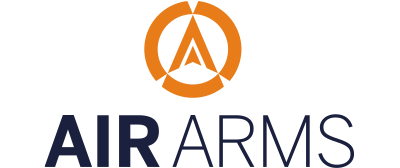
The benefits of Hunter Field Target and Field Target shooting1 Comment5 March 2020 | Air Arms Are you looking for a new pastime? One that is competitive, social and outdoors? Well, if airguns are your bag then Hunter Field Target (HFT) and Field Target (FT) shooting could be just what you are looking for in 2020. Perhaps you spent your childhood plinking in your back garden and maybe you shot airguns a bit as a teenager, there is no better time to pickup the sport again as an adult. You never know, you could find yourself finishing on a podium in the near future!
So, what is HFT? It is an outdoor sport that combines field target shooting and hunting in woodland and fields. A typical course is made of 30 lanes with a total of 30 targets raging from eight to 45 yards. The metal knock-down targets are normally made up of British pest species such as grey squirrel, rabbit, crow and magpie although simple geometric shapes are often used too. A typical HFT set-up consists of an air rifle rated a maximum of 12 ft/lb which is 800 ft per second with an 8.44 grain pellet and can vary from a basic break-barrel spring powered version to the a costly electronic pre-charged pneumatic (PCP) rifle. The most popular calibre is .177 teamed with a telescopic sight fitted with a mil-dot or 30/30 reticule capable of up to 12x magnification. One of the main skills in HFT is to be able to range the target as accurately as possible using just your eyes or some shooters use the scopes reticule to measure the kill zone or face plate, this is called bracketing the target. Once you have taken your first shot competitors are not allowed to adjust your scope again. Most shots are taken prone laying on a shooting matt.
Field Target also takes place in woodland or open fields using air rifles that are also a maximum of 12 ft/lb with a maximum velocity of 795ft/sec with an 8.44 grain pellet. A course consists of 40-50 knock-down metal targets placed within lanes, normally consisting of two targets per lane. You have just two minutes to shoot each lane. They can range from 10 to 55 yards, however the range of target is not given, the competitor must either estimate by eye or use their telescopic sight’s parallax feature to calculate the distance of the target, they then use the scopes elevation turrets to dial the shot in. You’ll often see competitors using huge scope with x40 or x50 magnification. Competitors adjust the scope for every target. Most shots are taken from the sitting position on a large shooting cushion. The main difference between the two disciplines is the way targets are ranged, the scoring system, plus the size and distance of targets. There are so many fringe benefits to taking up competitive airgun shooting. It is open to absolutely everyone – all ages (junior right through to veterans), abilities, fitness levels and budgets are catered for. There is nothing stopping you having a go. Your local club will be delighted to take you under their wing and help you get going. Once you have mastered local competitions, you can progress to national or even international level if you feel compelled. Of course, being outdoors, around like-minded people is always great for one’s mental health too. To get started and find your nearest club, visit the United Kingdom Association of Hunter Field Target website or for Field Target visit the British Field Target Association website. 'Thanks To PoP for the pictures: https://www.pelletonpellet.co.uk/ |
|
Very nice i am planning of visiting uk every 3 months to go for a shoot . Becouse in malta not much of a sport